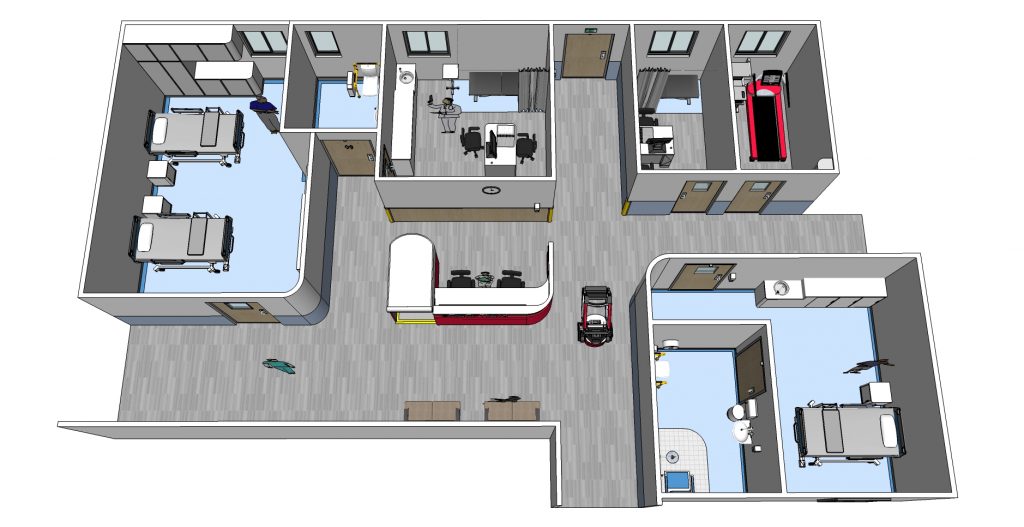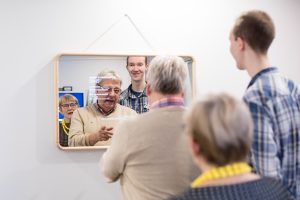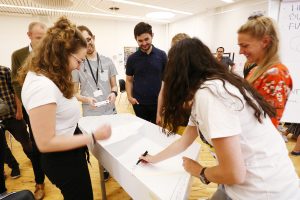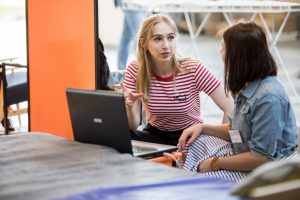Prototype of a rotating board game cube
Check our new prototype! Võru County Vocational Training Center – TSENTER in Estonia has developed a rotating board game cube dedicated for public spaces. Now both children and seniors can share joyful moments together while playing the board games in outdoors. There are 4 different board games on the sides of the cube where you can play classic checkers, as well as today’s senior childhood board games such as Circus and Ludo. Board games offer recognition and fun for the seniors as well as the opportunity to connect different generations – grandparents can teach their grandchildren board games of their childhood.
Prototype of a Medical Smart Bed „Medtress”
This demonstration video shows the contact free vital sign sensing functions the medical smart bed „Medress” in a clinical setup. Therefore the test person is laying in the medical smart bed without being connected to any cables. As can be seen, when the person moves out of the bed the measurement works through the bed sheet layer and clothing. The vital sign values get real-time displayed on the screen and show the ECG signal in the upper plot and the respiration rate signal in the lower plot.
Prototype of a Magic mirror
Magic mirror, developed by the Satakunta University of Applied Sciences, is a mirror enriched with a computer, a display and a microphone. If the prototype is used in public spaces, the Magic Mirror adds informative functionality and serves as an information board, in addition to its primary function as a mirror. The software has customizable modules (date, time, calendar, weather, website content etc.) that are shown on the mirror screen. The user interacts with the mirror through simple voice commands that allow the mirror to display more or less of the content. The screen inside the mirror can display news and notifications (events, opening and closing time, bus schedule) that the public space wishes to share with the visitors. Different websites can be embedded into the screen. The prototype can be used in indoor public spaces such as libraries, waiting rooms, museums and similar, away from direct light to maximize the visibility and readability of the screen.
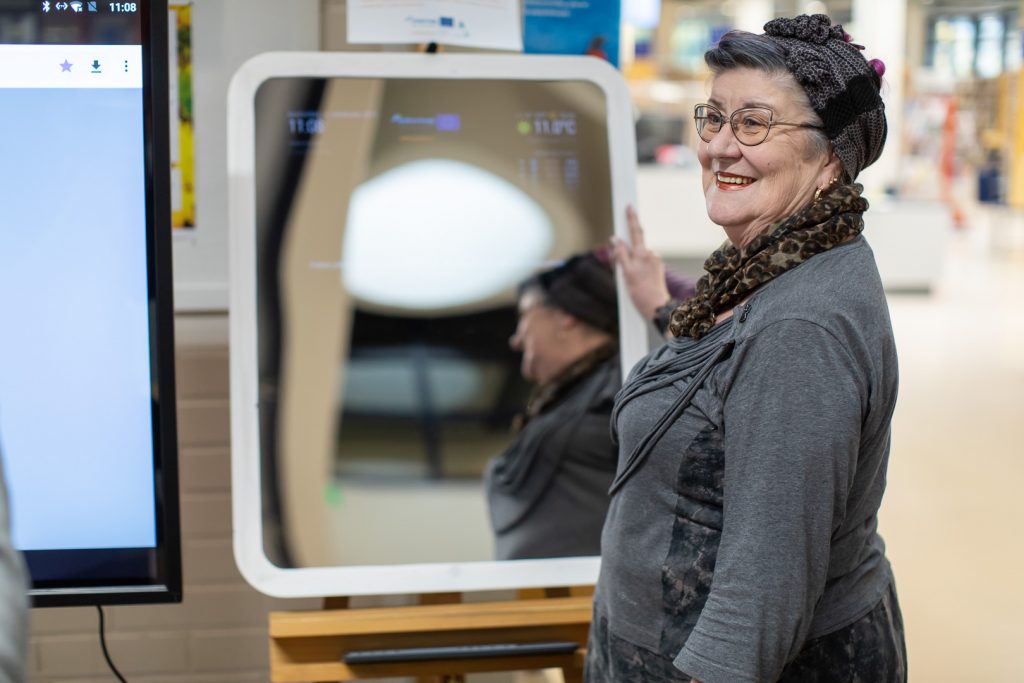
Prototype of a Smart Cushion
Smart Cushion, developed by the Satakunta University of Applied Sciences, is a cushion with integrated force (pressure) sensors used for playing exergames. The exergames were especially developed for such technology. The cushion is connected to an Android device (e.g. tablet) via Bluetooth. The prototype was developed as part of BaltSenioR 2.0 project and is an improvement of a previous Smart Chair prototype. The aim of Smart Cushion (and Smart Chair) is physical activation of primarily older adults (targeting at quadriceps muscle strength for fall prevention and core stability) but it can be applied to other age groups, too. The three exergames (Ski jumping, Snowboarding and “Hit the target”) are played by user’s movements on the cushion (chair) such as standing up or leaning side to side.
The Smart Cushion has broad usage possibilities as it can be placed on any type of seating surfaces (chairs, sofas) in indoor public spaces (e.g. libraries, waiting rooms, common areas of elderly homes), including wheelchairs. It thus widen its accessibility which the Smart chair was lacking.
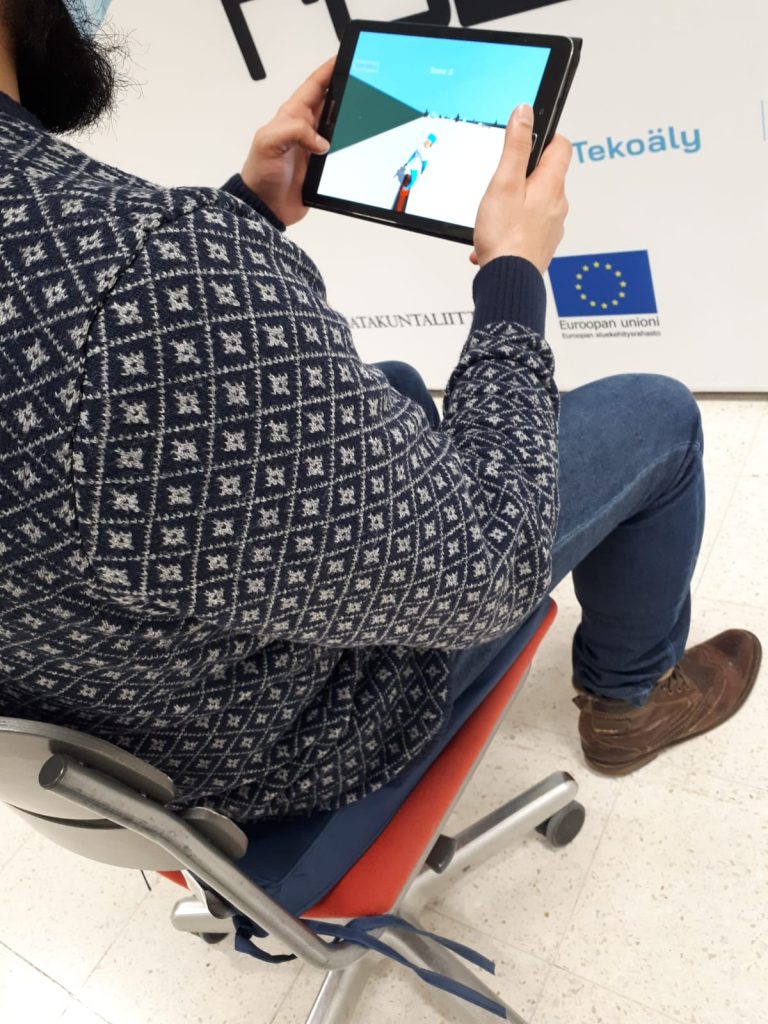

University of Skövde has developed further the smart cushion in regard to design, function and usage for sensors. The sensors and function of the smart cushion have been implemented in the chair seat and are used to play the games earlier developed in BaltSe@nioR on tablets. The prototypes have been further developed with sensors registering presence and time in chair. This data is logged and incorporated in the technical infrastructure and the presence in the chair can be viewed on the screens in the University of Skövde demo space – Skaraborg Health Technology Center (SHC).
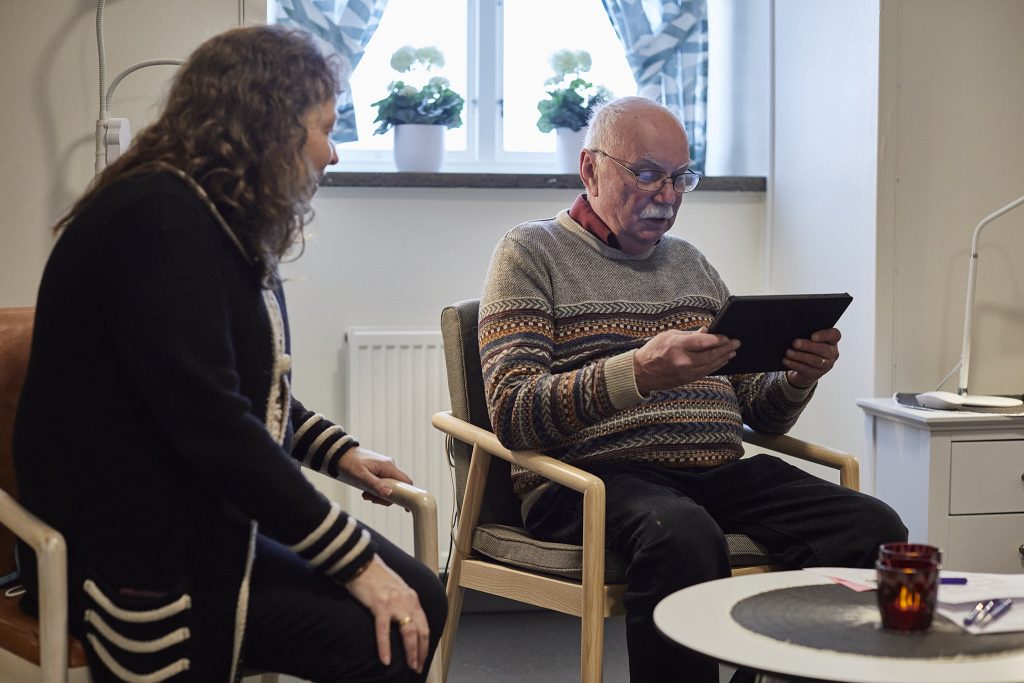
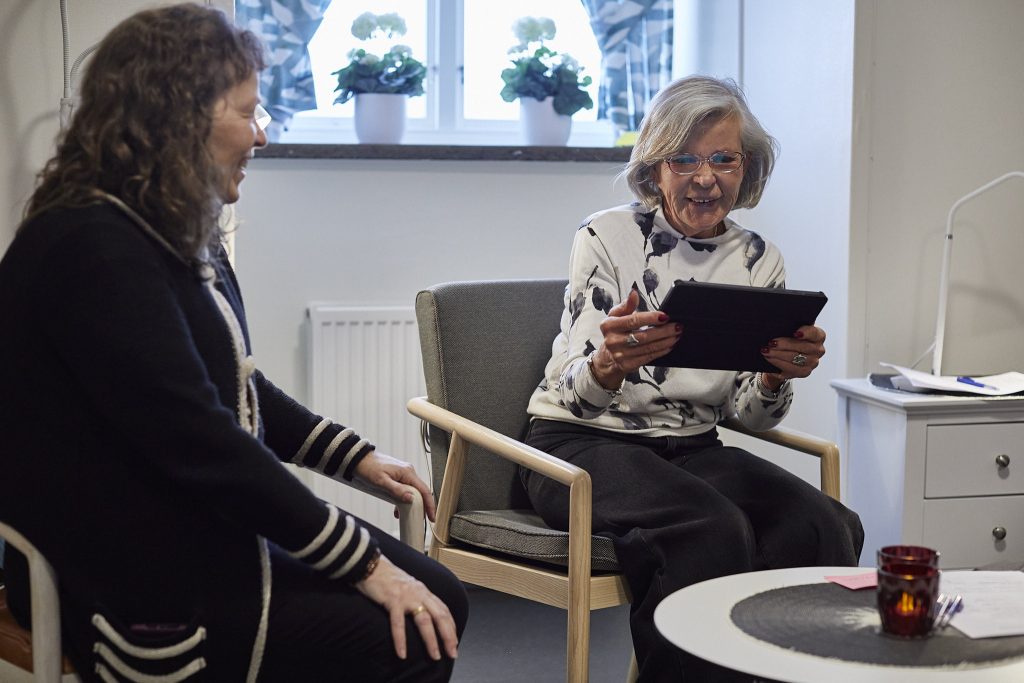
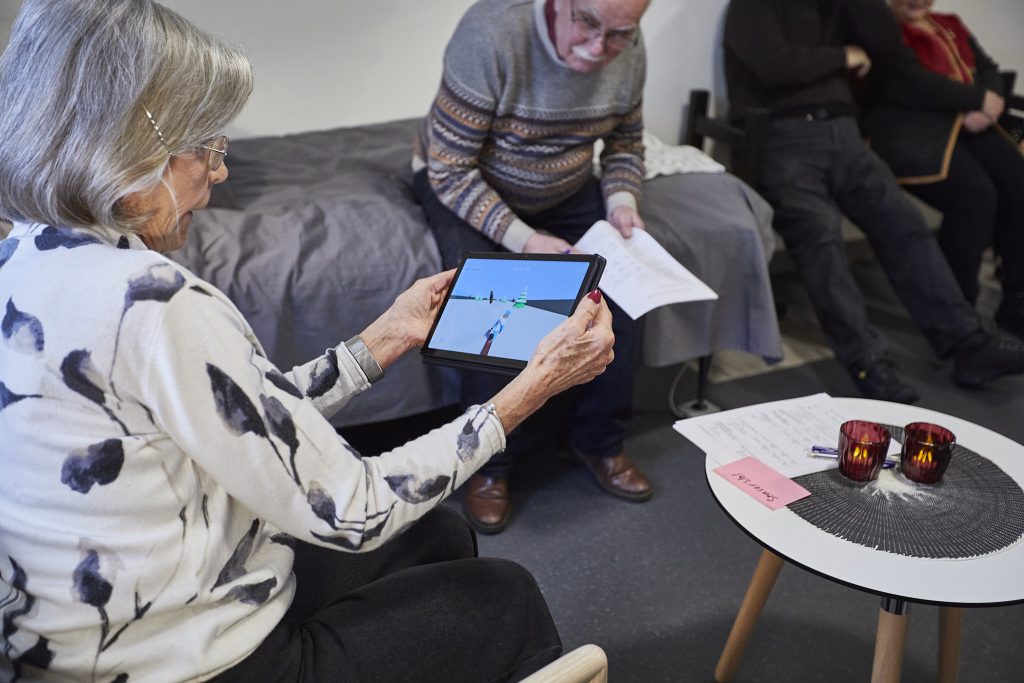
Prototype of a Smart tablecloth (Integrating RFID into furniture and textile)
Smart tablecloth, developed by the Satakunta University of Applied Sciences, utilizes Radio Frequency Identification (RFID) technology via Near Field Communication (NFC) tags which when scanned display textual content on a smart phone and speak it aloud in several languages. Each tag corresponds to its own language (English, Polish, German, Latvian, Lithuanian, Estonian, Finnish, Swedish, Danish, and Russian).
This prototype is a tablecloth with a printed world map. Each language tag is hidden under a corresponding country map. The location of the tag is marked with a round sticker on the visible part of the tablecloth to guide the user to the most accurate location of the tag. In this prototype, the content is a restaurant menu in different languages. It works with a smartphone with enabled NFC function and the tablecloth app. Upon starting the app, the user hovers their smartphone over the desired tag. The app displays the menu text in the language of the country that the phone is placed on and speaks the text aloud.

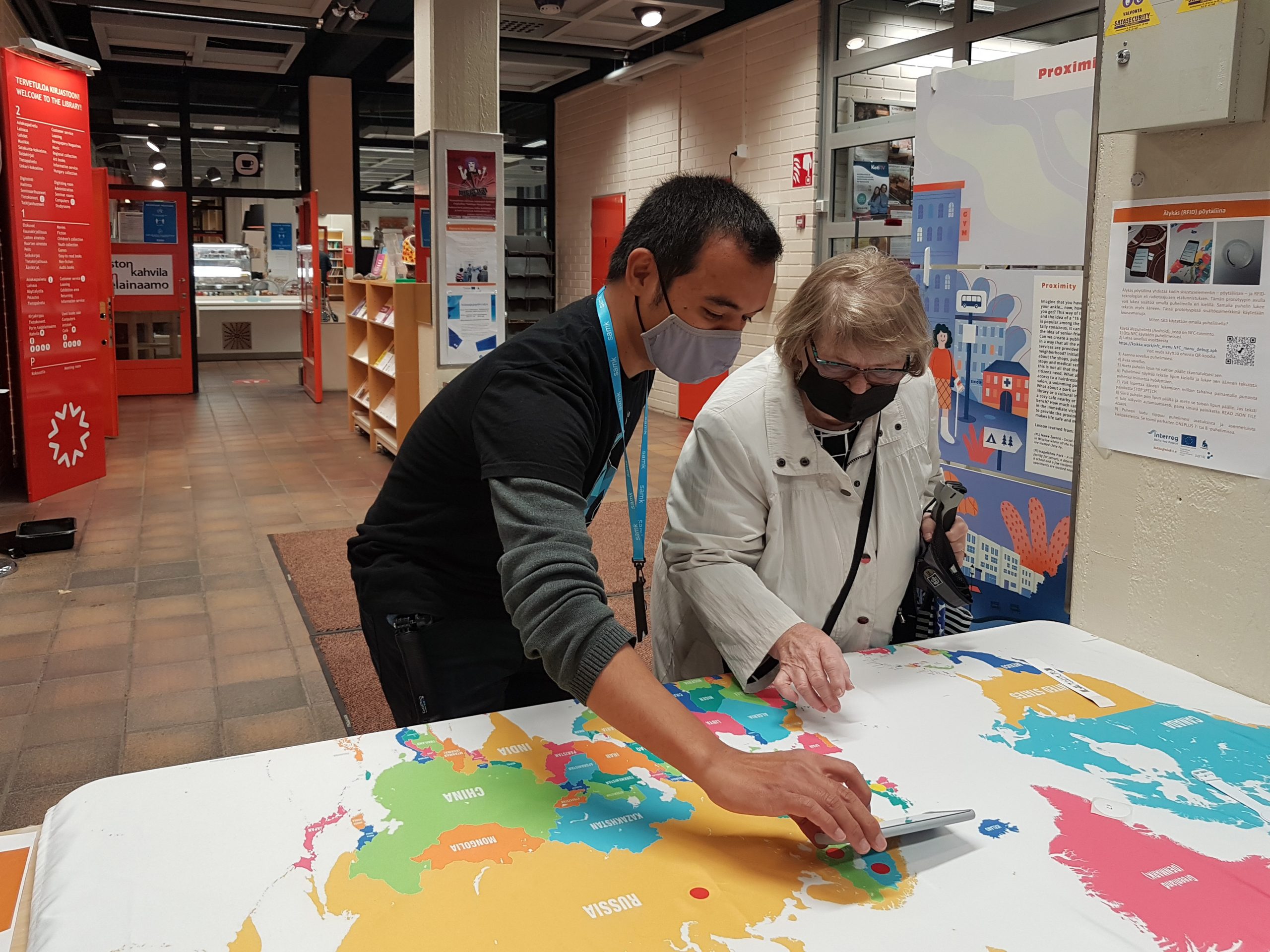
Watch the video to see how it works:
Prototypes of smart tablecloths
Collaboration between Art Academy of Latvia, Sigulda Crafts Studios, Satakunta University of Applied Sciences, Finnland
In summer 2021 there were workshops organized with participants of craft studios to exchange skills, ideas and knowledge about art and craft between craftswomen and students from Art Academy of Latvia (LMA) in the garden of Sigulda Culture Center “Devons”. The result of this collaboration was set to be an exhibition of new works created after workshops.
LMA students went on a “Field Search” trip – visiting good practice places in Copenhagen and Helsinki in August. Meeting with project partners from Satakunta University of Applied Sciences, Finnland, where a new assignment arose – creating design for smart tablecloth implementing RFID tags that allow senior people to gather information about a restaurant menu in a convenient way.
One of the requirements for tablecloth design was to use examples of craft objects made by our senior friends as a core element of design. Another workshop in Sigulda “Devons” was organized with craftswomen. Photographs were taken of crafted items to digitize them and use in the design process.
Student Una Valtere for her tablecloth design used fragments of Baltic Sea map and an ethnographic pattern of hand woven tablecloth as water and land. The dinner menu’s RFID tags can be found under the red dots indicating also Riga and Pori.
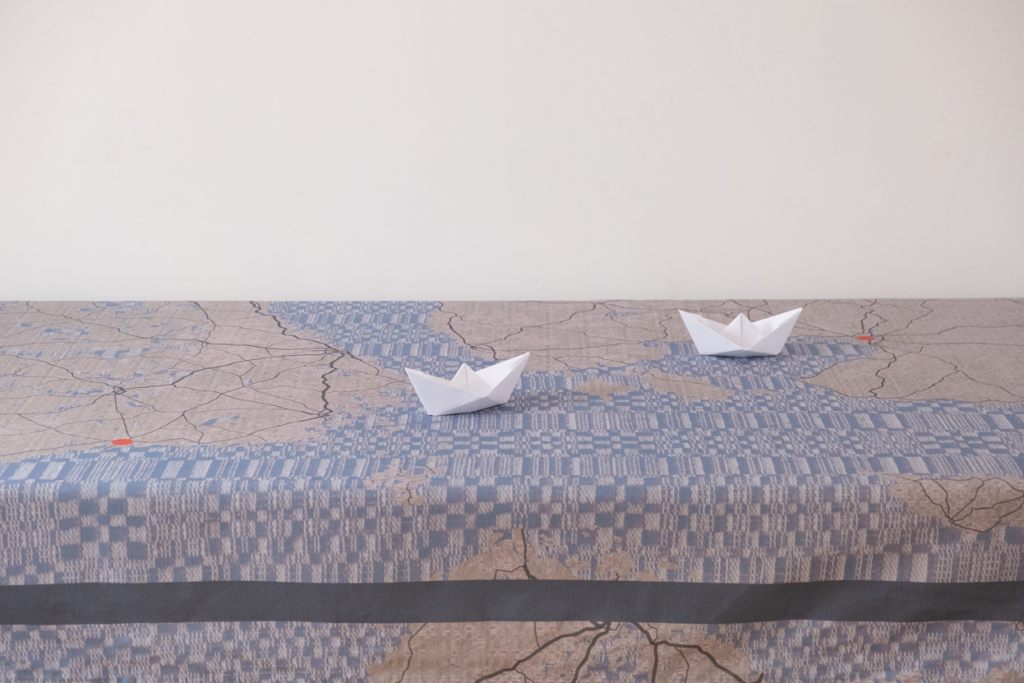
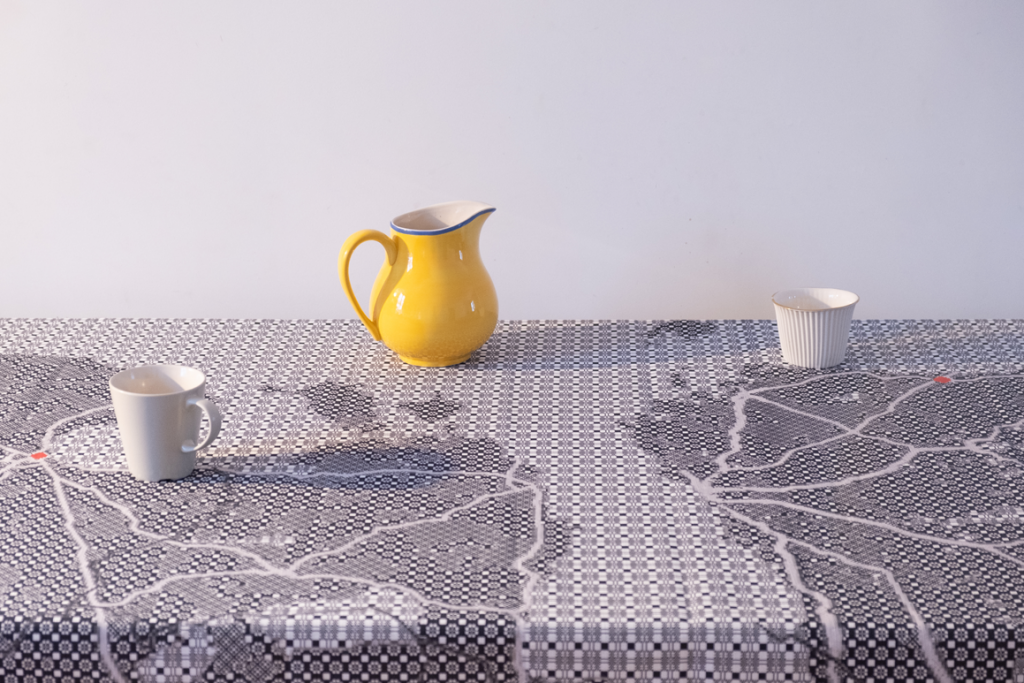
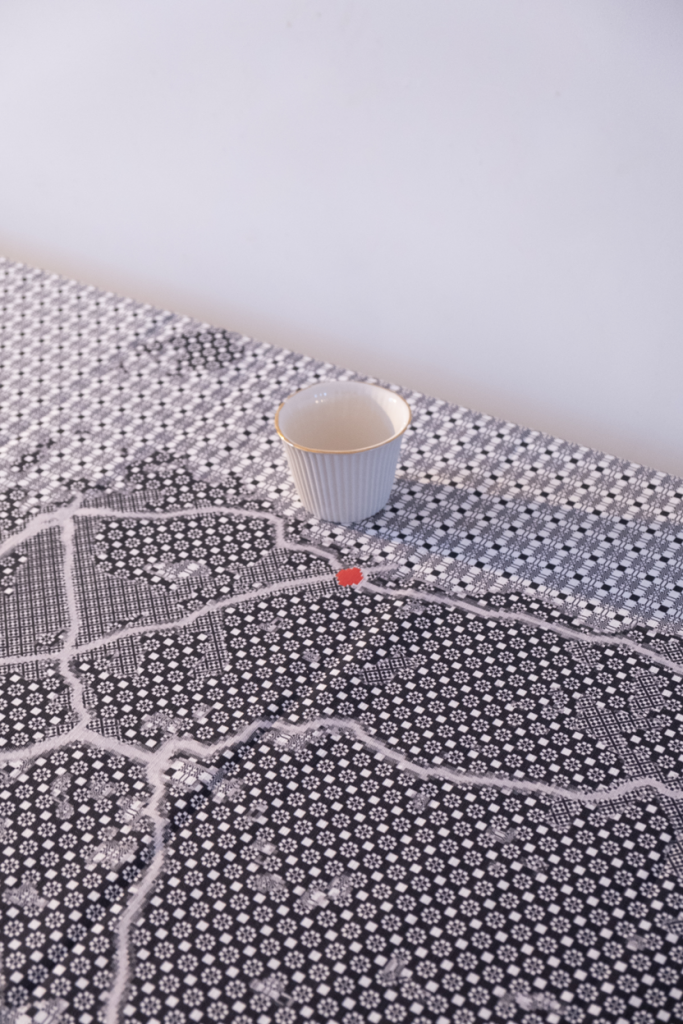
For her tablecloth design Maruta Konceviča used an ethnographic pattern which can be found in both Latvian and Finnish crafted fabrics and abstract aquarelle painting with connotations of classical Finnish design. The dinner menu’s RFID tags can be found under white and black dots.
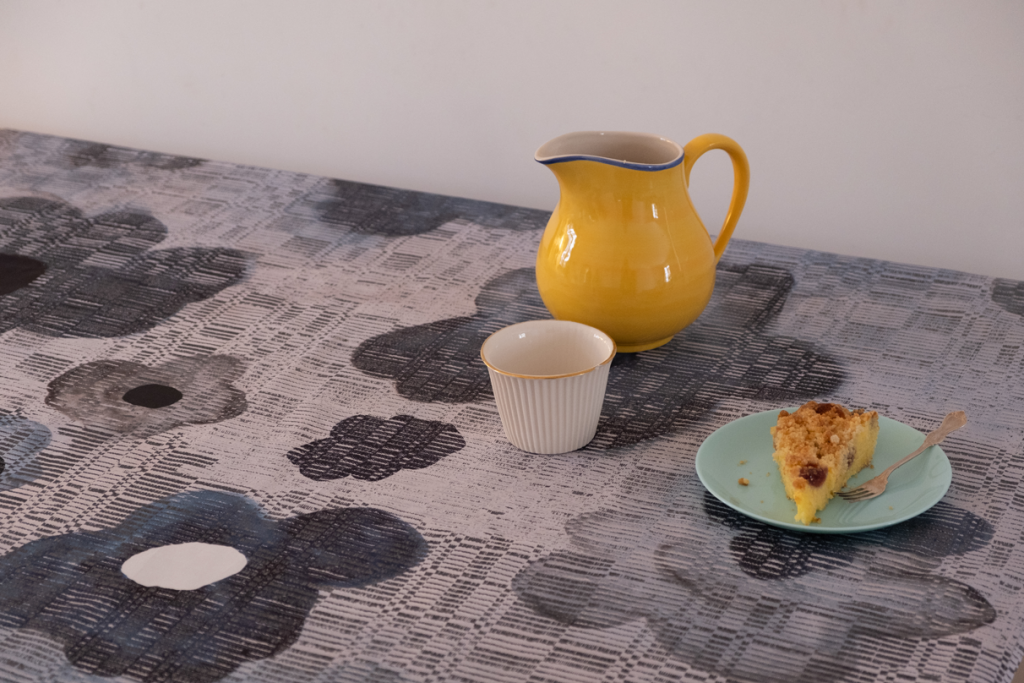
In her tablecloth design Šarlote Baškevica used eco batik (author -Lauma Krastiņa) fabric as the base. A well-known Christmass song is written in two languages – Latvian and Finnish-but in reversed layout. Diners can discuss this awkward layout and join for a song after dinner. The dinner menu’s RFID tags can be found under white Chrismass trees.
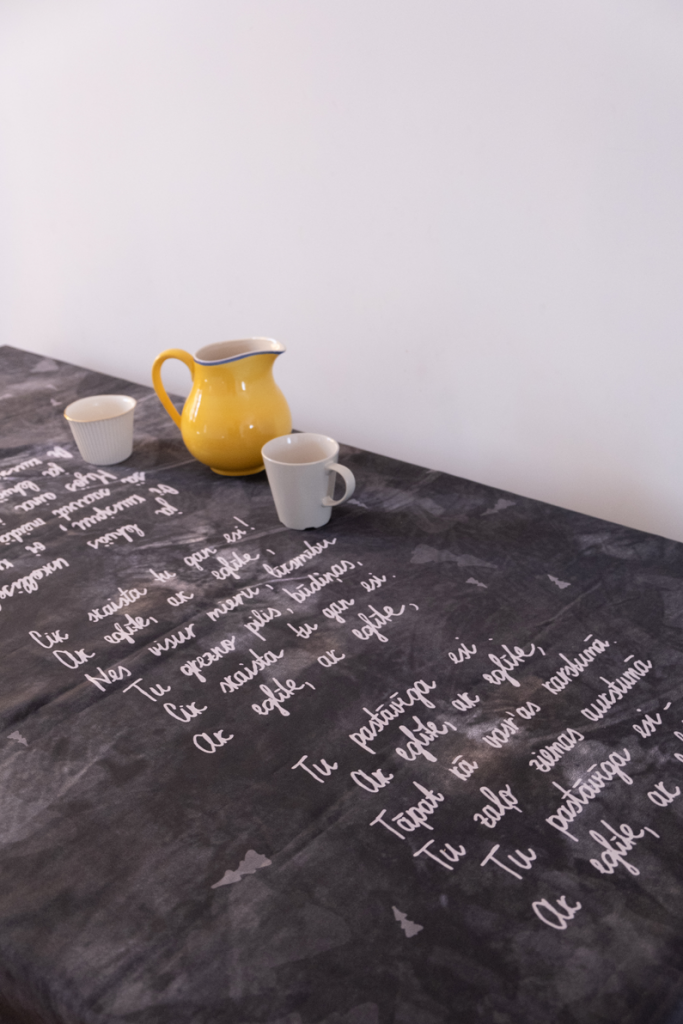
All tablecloth designs have been digitally printed on cotton or linen. A professional afterwork ( edges pleated and sewn) have been made by two students Ilona Valaine-Blekte and Dace Grīnberga. A photoshoot has been made by Beatrise Lasmane.
Prototype of a swinging bench for seniors
The goal was to create a bench for seniors for public spaces. As an addition to offer safe and comfortable seating the idea was to add a physical activity – low amplitude swinging. The prototype was developed by Võru County Vocational Training Center – TSENTER in Estonia.
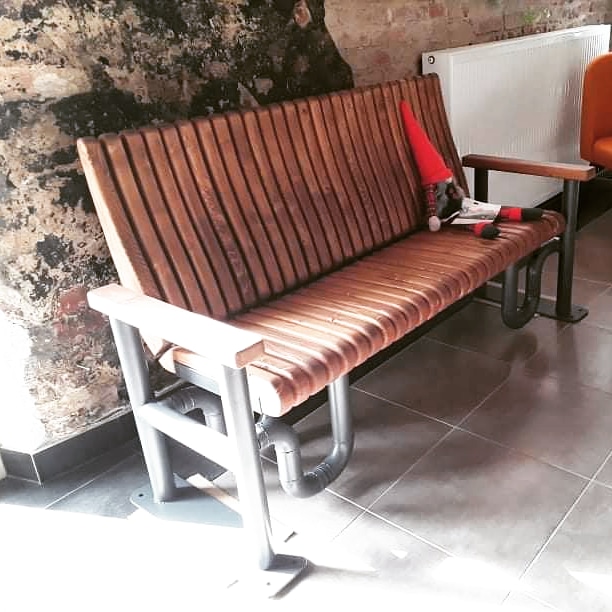
Prototype of a table for VR/AR devices
The prototype, developed by ITMO University, allows for a closed tactile environment that ensures the user’s safety while using VR devices. A chair that rotates 360° allows the user to comfortably immerse him/herself in any VR environment, and a closed-loop furniture system prevents involuntary movement and offers a surface for hand support throughout the experience — thus minimizing motion sickness. The proposed solution allows seniors to safely and comfortably use VR devices for their medical, education and communication needs.
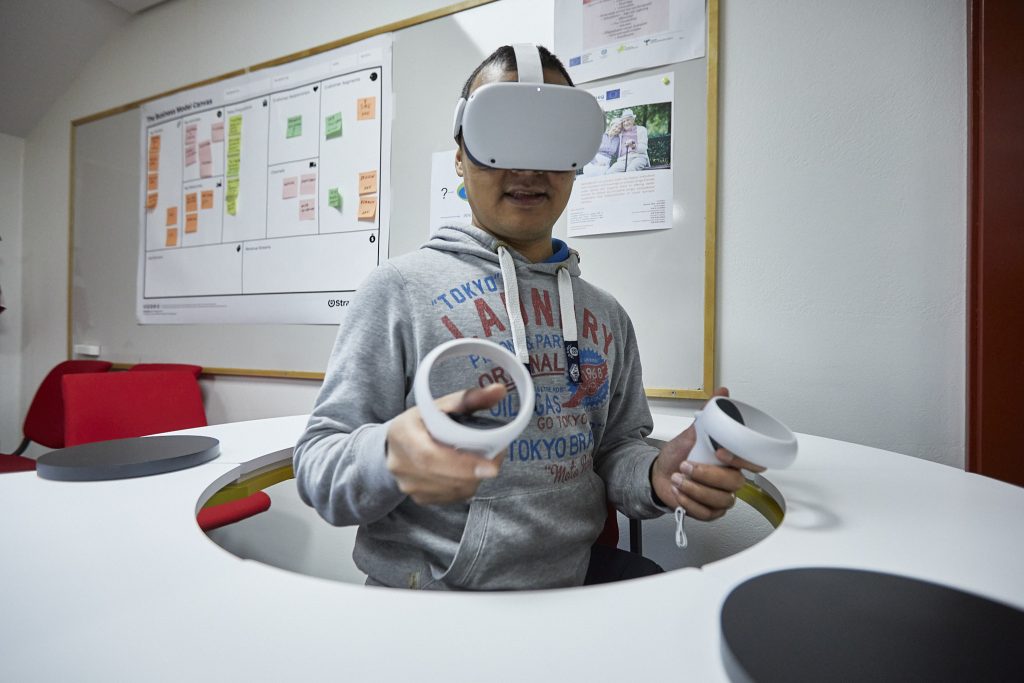
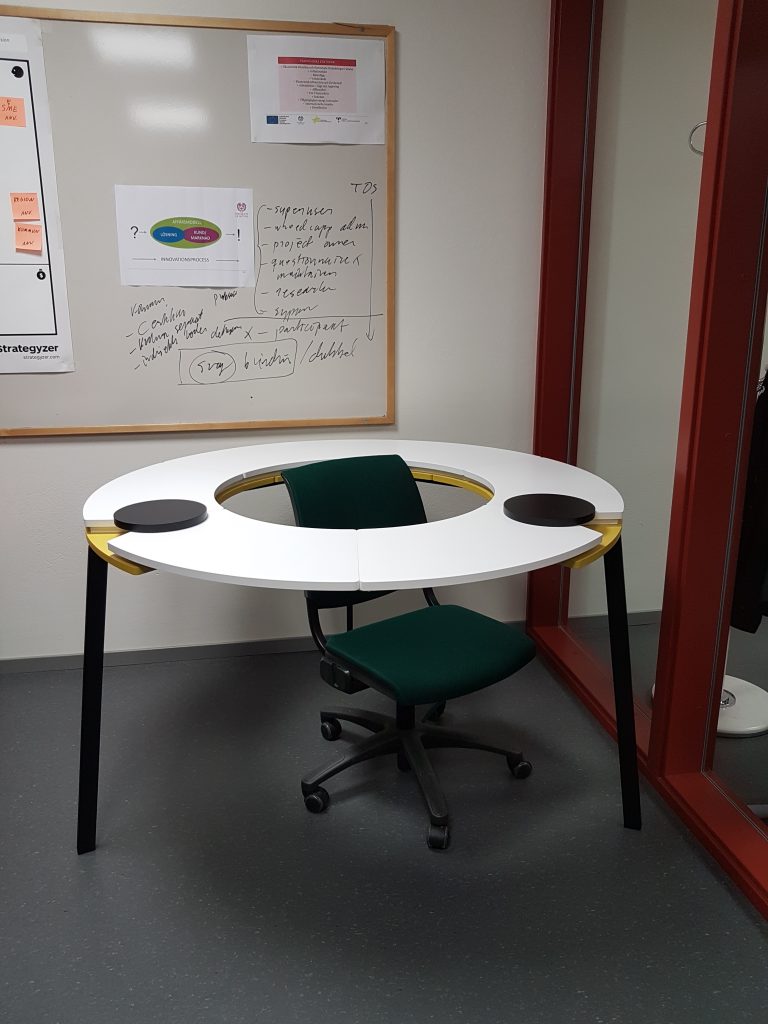
Prototype of an automated robotic support for fallen senior
This video show the development of the Technical University of Munich within the projects BaltSe@nioR and BaltSe@nioR 2.0. The fall detection, which notifies the robot, was developed in the project BaltSe@nioR. The Android App and the stand-up module interfaced at the mobile platform have been newly developed in BaltSe@nioR 2.0. The wireless communication is executed via a server, hosted on a Raspberry Pi 3.
This video shows the fully implemented functionality of the automated stand up support, which targets to assist fallen elderly, which are still conscious but too exhausted to stand up alone.
Robotic Assistance in Standing Up at BaltSe@nioR 2.0 (Demonstration of a Functional Test)
Demonstration of the fall detection and mobile platform. The fall detection is connected wireless to the mobile platform and enables thereby an automated emergency call of the robot if someone falls.
In BaltSe@nioR the robot was used to bring medicine, water, smartphone and handles next to the fallen person. In BaltSe@nioR 2.0 the handles have been removed and replaced by the stand-up module. The fallen person will be picked up from the ground into a sitting position. The video shows an intermediate result of this development, where the mechanic is tested. For this purpose, a person of ~85 kg weight + two dumbbells with each 20 kg (i.e. 125 kg in total) was lifted by the stand-up module (i.e. 125 kg in total). Next steps of this prototype is the establishing of a software interface with the robot, that this process is running autonomously in future.
The target group of such a development are seniors in care home facilities, which may have fallen in their private rooms. The robot will offer the opportunity to stand up without the need of care staff, if wanted. One robot can operate with several fall detections which an allocated in the same floor.
Conceptual proposal of robotic support in a care station
The figure shows how the stand-up module, which can be used in the public domain on the example of a hospital station. The robot in the center of the picture can be hidden into the box next to the nurse station. Therefore, the robot comes to the foreground only, if needed, e.g. when the care staff is busy with an emergency.
The robot can navigate thanks to the unobtrusive installed fall detection to the target area and support in standing up. In future, additional functionalities will be implemented, e.g. automated anamneses, video call option etc.
